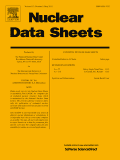
NUCLEAR DATA SHEETS
Scope & Guideline
Empowering Researchers with Essential Nuclear Data.
Introduction
Aims and Scopes
- Nuclear Structure Data:
The journal focuses on the systematic collection and evaluation of nuclear structure data, including information on isotopes and isobars across various mass numbers, facilitating research in nuclear physics. - Decay Data and Half-life Measurements:
A significant emphasis is placed on the measurement and reporting of half-lives, decay modes, and associated uncertainties, which are critical for applications in nuclear medicine, energy, and safety. - Fission and Fusion Data:
The journal includes studies on fission and fusion reaction data, contributing to the understanding of nuclear reactions and their applications in energy production and research. - Experimental Methodologies:
Research published often details advanced experimental techniques for measuring nuclear properties, promoting methodological advancements in the field. - Cross-section Measurements:
The journal covers cross-section data for various nuclear reactions, essential for applications in nuclear engineering, safety analyses, and fundamental physics research.
Trending and Emerging
- Precision Measurement Techniques:
There is a growing focus on precision measurement techniques for half-lives and decay data, underscoring the importance of accuracy in nuclear data for both fundamental research and applied sciences. - Advanced Fission Product Studies:
Recent publications emphasize detailed studies on fission product yields and spectra, particularly in the context of critical assembly experiments, which are crucial for nuclear safety and reactor design. - Cross-section Evaluations for Isotopes:
An increasing number of studies are dedicated to evaluating cross-section data for various isotopes, reflecting a growing need for reliable data in nuclear engineering and radiation applications. - Integration of Computational Tools:
Emerging themes include the integration of computational methods and software tools for nuclear data evaluation, enhancing the efficiency and accuracy of data analysis in nuclear physics. - Specialized Libraries for Nuclear Data:
The development and utilization of specialized libraries, such as FENDL for fusion research, indicate a trend towards tailored databases that support specific research areas within nuclear science.
Declining or Waning
- Historical Data Compilation:
There has been a noticeable reduction in papers focusing on compiling historical nuclear data, possibly due to the completion of extensive datasets and a shift towards more experimental and analytical studies. - Basic Nuclear Theory:
Papers dedicated solely to theoretical explorations of nuclear physics concepts are less frequent, suggesting a trend towards empirical research that emphasizes experimental validation. - General Nuclear Applications:
Research related to broad applications of nuclear data (beyond specific fission or fusion contexts) appears to be waning, as the journal increasingly focuses on specialized and detailed studies.
Similar Journals

ATOMIC ENERGY
Exploring the frontiers of nuclear energy and engineering.ATOMIC ENERGY is a distinguished journal published by SPRINGER, focusing on pivotal advancements and research within the field of Nuclear Energy and Engineering. With an ISSN of 1063-4258 and an E-ISSN of 1573-8205, this journal has been a critical resource since its inception in 1956, serving both historic and contemporary scientific inquiries into nuclear technologies. Currently positioned in Q3 of the Nuclear Energy and Engineering category, ATOMIC ENERGY ranks 49 out of 77 in Scopus, representing a percentile of 37%, highlighting its relevance in the research community. While it is not an open access journal, it continues to draw a diverse readership eager to engage with the latest findings and innovations in nuclear science. The journal’s objectives include fostering collaborative research, sharing expertise, and addressing contemporary challenges in nuclear energy. As such, ATOMIC ENERGY remains an essential platform for researchers, professionals, and students alike, contributing significantly to the ongoing dialogue in the field.
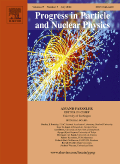
PROGRESS IN PARTICLE AND NUCLEAR PHYSICS
Illuminating Complex Phenomena in Particle PhysicsPROGRESS IN PARTICLE AND NUCLEAR PHYSICS is a prestigious academic journal published by Elsevier, focusing on the dynamic fields of particle and nuclear physics. Established in 1978 and continuing through 2024, this journal is recognized for its significant contributions to the scientific community, holding a Q1 ranking in Nuclear and High Energy Physics and topping the Scopus ranking in its category. With an impactful platform that encourages the dissemination of groundbreaking research, it attracts a diverse readership of researchers, professionals, and students eager to explore the latest advances in these fields. The journal is headquartered in Amsterdam, Netherlands, and provides an essential resource for those seeking to understand complex phenomena in particle and nuclear science. Although it does not offer Open Access options, it continues to uphold a reputation of excellence and rigor, making it a vital source of information in its domain.
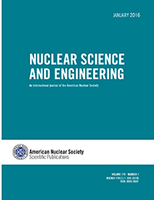
NUCLEAR SCIENCE AND ENGINEERING
Driving Progress in Nuclear TechnologyNUCLEAR SCIENCE AND ENGINEERING, published by Taylor & Francis Inc, is a leading journal in the field of nuclear energy and engineering, providing a vital platform for disseminating cutting-edge research and advancements from both academia and industry. With an ISSN of 0029-5639 and an E-ISSN of 1943-748X, the journal boasts a notable impact factor and is categorized in the Q2 quartile for 2023, reflecting its influence and quality in the field. Covering a comprehensive scope from the inception of nuclear technology in 1969 to contemporary advancements forecasted for 2024, it ranks #38 out of 77 in the Scopus Energy – Nuclear Energy and Engineering category, placing it in the 51st percentile. Although the journal is not open access, it remains essential for researchers, professionals, and students seeking to stay abreast of the latest developments and innovations in nuclear science. Located in the heart of Philadelphia, NUCLEAR SCIENCE AND ENGINEERING contributes significantly to the advancement of nuclear engineering knowledge and practice, making it a crucial resource for anyone involved in this dynamic field.

EUROPEAN PHYSICAL JOURNAL A
Empowering Scientific Discovery in Nuclear PhysicsEUROPEAN PHYSICAL JOURNAL A (EPJ A), published by Springer, is a premier journal in the field of Nuclear and High Energy Physics, dedicated to fostering innovative research and scholarly communication within the scientific community. With an impressive impact factor that reflects its significant contribution to the discipline, EPJ A ranks in the Q1 category and boasts a Scopus rank of 24 out of 87, placing it in the 72nd percentile of its field for 2023. This journal, with its ISSN 1434-6001 and E-ISSN 1434-601X, embraces a commitment to open access, ensuring that cutting-edge research is accessible to a global audience. With coverage from 1998 to 2024, EPJ A continues to be a vital resource for researchers, professionals, and students alike, promoting collaboration, knowledge sharing, and advancements in the vast landscape of nuclear physics and high-energy interactions. Located in Germany with a representative address in New York City, this journal serves as a bridge for international scientific discourse.

PHYSICS OF ATOMIC NUCLEI
Advancing Insights into Atomic NucleiPHYSICS OF ATOMIC NUCLEI is a distinguished journal dedicated to advancing the understanding of nuclear and particle physics, published by PLEIADES PUBLISHING INC. With its ISSN 1063-7788 and E-ISSN 1562-692X, this journal serves as a vital resource for researchers, professionals, and students in the fields of atomic and molecular physics, as well as high-energy physics. The journal has been actively contributing to the scientific community since its inception in 1996 and continues to publish valuable findings through 2024. Despite its current standing in the Q4 category for both Atomic and Molecular Physics, and Nuclear and High Energy Physics, there is an abundance of potential for growth and impact in these disciplines, as evidenced by its placement in the Scopus rankings. While the journal does not currently offer open access, it remains committed to disseminating quality research that informs and engages the scientific community. Explore PHYSICS OF ATOMIC NUCLEI to stay at the forefront of nuclear physics research and contribute to the dialogue in this critical area of study.
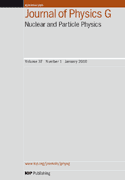
JOURNAL OF PHYSICS G-NUCLEAR AND PARTICLE PHYSICS
Exploring the Depths of High Energy PhysicsJOURNAL OF PHYSICS G-NUCLEAR AND PARTICLE PHYSICS, published by IOP Publishing Ltd, stands as a premier journal in the realm of Nuclear and High Energy Physics. With an established presence since 1989 and currently converging toward 2024, this influential journal emphasizes groundbreaking research and discoveries in particle physics, fostering the dissemination of knowledge among a global audience of researchers, professionals, and students. Recognized for its high-quality publications, it holds a Q1 ranking in its category for 2023, placing it at an impressive 87th percentile among 87 journals in its field as per Scopus Rankings. The journal's impact is reflected in its esteemed reputation, making it an essential resource for advancing the frontiers of physics. Although it currently does not operate under an open access model, the journal ensures that subscribers receive comprehensive insights into the latest developments and theoretical advances that shape our understanding of the universe.
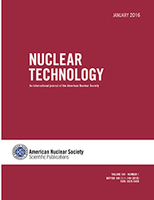
NUCLEAR TECHNOLOGY
Pioneering Research for a Sustainable Nuclear FutureNUCLEAR TECHNOLOGY is a leading academic journal published by TAYLOR & FRANCIS INC, dedicated to the expansive field of nuclear science and engineering. With a robust ISSN of 0029-5450 and an E-ISSN of 1943-7471, this journal provides invaluable insights and cutting-edge research from 1971 to 2024. Positioned in the esteemed Q2 category for Condensed Matter Physics, Nuclear and High Energy Physics, and Nuclear Energy and Engineering, it boasts respectable Scopus rankings, underscoring its impact and relevance within the academic community. NUCLEAR TECHNOLOGY serves as a crucial platform for researchers, professionals, and students, fostering an exchange of knowledge that advances the understanding and application of nuclear technologies. While it operates on a subscription model, this journal remains a vital resource for those aiming to contribute to or stay at the forefront of developments in nuclear technology.
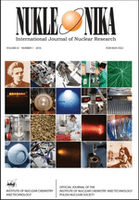
NUKLEONIKA
Connecting Ideas, Inspiring DiscoveriesNUKLEONIKA, published by SCIENDO, is a leading open access journal that has been serving the scientific community since its establishment in 1968. Focused on the domains of Nuclear and High Energy Physics, Condensed Matter Physics, and Nuclear Energy and Engineering, this journal provides a platform for innovative research and technological advancements in a variety of interdisciplinary fields. With an impressive history of publications and a current Q3 ranking in several categories, including Safety, Risk, Reliability and Quality and Waste Management and Disposal, NUKLEONIKA is recognized for its significant contributions to scientific discourse. Open access since 2014, the journal ensures that all research outputs are freely available, facilitating broad dissemination and accessibility for researchers, professionals, and students alike. Located in the heart of Warsaw, Poland, NUKLEONIKA aims to inspire collaborative efforts and foster a deeper understanding of complex physical phenomena and their practical implications.

FEW-BODY SYSTEMS
Innovating Insights into Complex Few-Body InteractionsFEW-BODY SYSTEMS is a distinguished journal published by Springer Wien, dedicated to advancing the field of Atomic and Molecular Physics and Optics. With an ISSN of 0177-7963 and an E-ISSN of 1432-5411, this scholarly periodical has been a vital resource since its inception in 1986, with a continued commitment to disseminating high-quality research up to 2024. Recognized in the Q2 quartile in its category and ranked 132 out of 224 in Scopus within the relevant fields, FEW-BODY SYSTEMS provides a platform for innovative studies that explore the complexities of few-body quantum systems, fostering discussions that enhance scientific understanding and technological advancement. Based in Vienna, Austria, this journal reflects a global scholarly community's engagement with pressing theoretical and experimental topics, contributing significantly to the ongoing discourse in physics and optics. Although it does not currently offer open access options, it remains a reputable choice for researchers, professionals, and students eager to delve into the intricate dynamics of few-body interactions.

NUCLEAR INSTRUMENTS & METHODS IN PHYSICS RESEARCH SECTION A-ACCELERATORS SPECTROMETERS DETECTORS AND ASSOCIATED EQUIPMENT
Transforming the landscape of nuclear research through advanced tools.NUCLEAR INSTRUMENTS & METHODS IN PHYSICS RESEARCH SECTION A is a leading journal published by Elsevier, dedicated to the advancements in accelerators, spectrometers, detectors, and associated equipment relevant to the fields of nuclear and high energy physics. With its ISSN 0168-9002 and E-ISSN 1872-9576, this journal fosters knowledge sharing among physicists and researchers globally, providing a critical platform for both theoretical and experimental studies. Currently ranked in the Q2 quartile for both Instrumentation and Nuclear and High Energy Physics, the journal maintains a robust position in the competitive Scopus rankings, with noteworthy placements that underline its scholarly impact. As of 2023, it occupies the 38th rank in Nuclear and High Energy Physics and the 79th in Instrumentation, illustrating its relevance in the scientific community. Covering research spanning from its inception in 1983 to the projected completion in 2024, the journal caters to a diverse audience of researchers, professionals, and students eager to stay abreast of the latest innovations and techniques in the realm of nuclear instrumentation. Although it primarily operates under subscription-based access, it is instrumental in disseminating pivotal findings and experimental methodologies that drive progress in the scientific community.